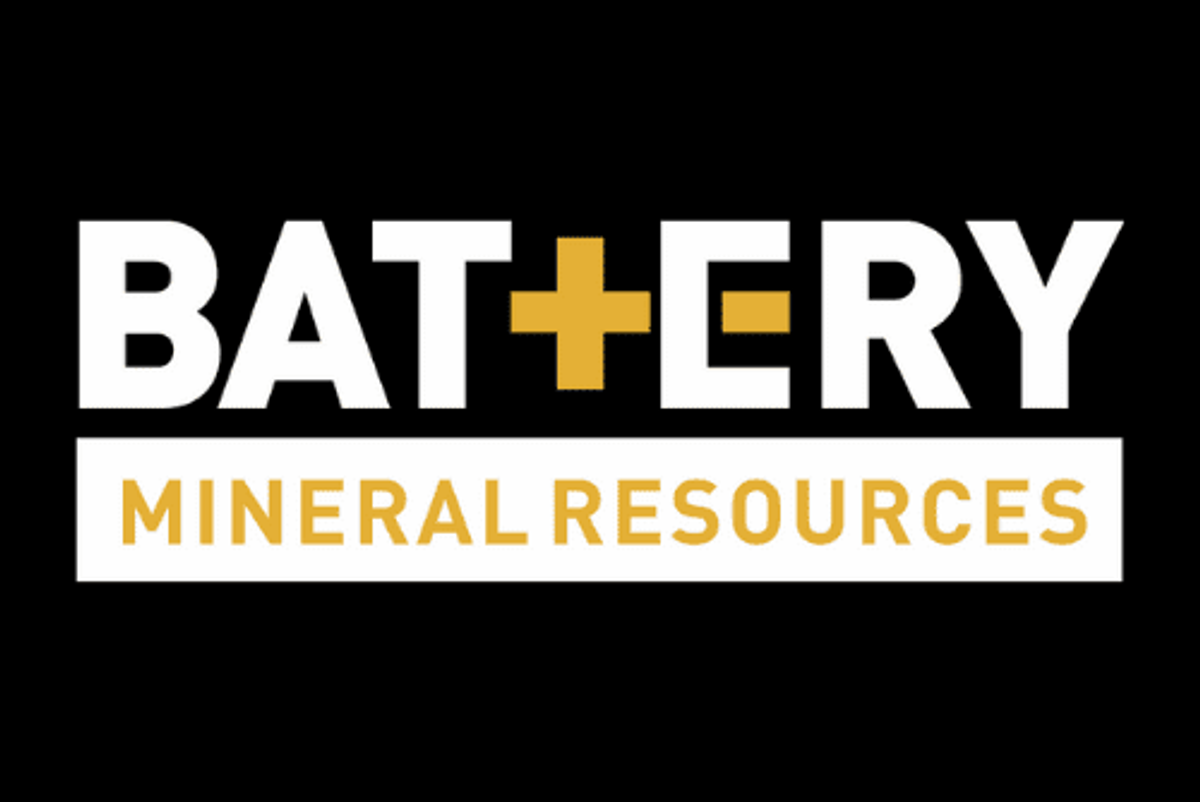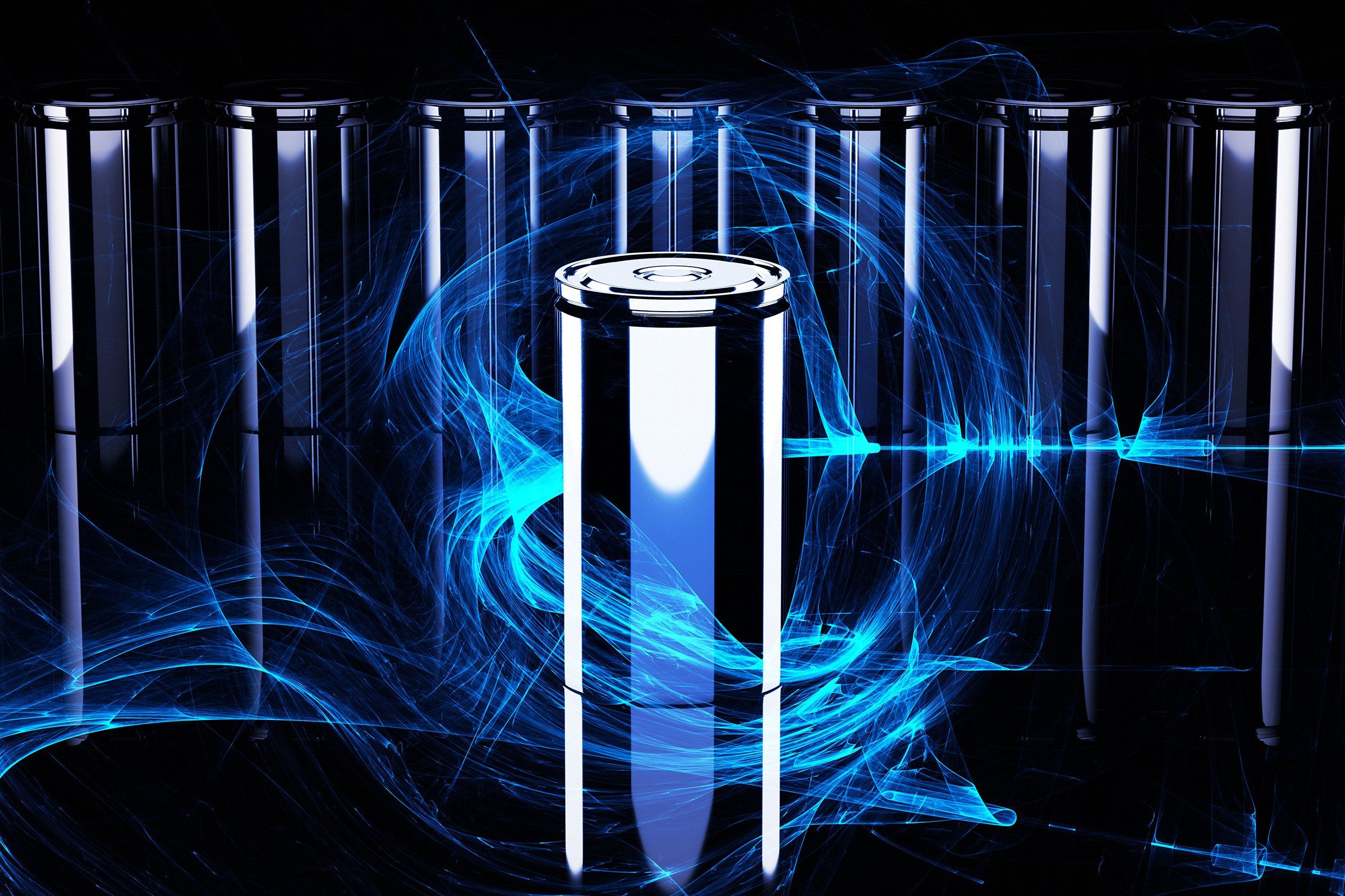
Battery Mineral Resources Corp. (TSXV: BMR) ("Battery" or "BMR" or the "Company") is pleased to announce further drill core assay results from the on-going 2021 exploration and in-fill drill program at the Punitaqui mine complex ("Punitaqui") in Chile. Punitaqui is a recently producing copper mining complex which is being developed for a potential resumption of copper-gold production in mid-2022.
Highlights
- Assay results from drillholes SAS-21-03, 04, 06, 07, and 08 totaling 199 samples (see Table 1) have been returned with encouraging results as follows:
- Drillhole SAS-21-03: 11 meters ("m") at 1.39% ("Cu") copper including 8m at 1.63% Cu
- Drillhole SAS-21-04: 16.7m at 1.37% Cu including 11.7m at 1.64% Cu and a second interval of 9m at 1.75% Cu
- Drillhole SAS-21-07: 3.4m at 2.10% Cu and a second interval of 4m at 1.56% Cu
- Drillhole SAS-21-08: 5.25m at 1.39% Cu and a second interval of 3.75m at 1.85% Cu
- Currently, three drills are operating on-site with a fourth drill expected shortly
- Previously announced results from the current program (see Table 2) included:
- Drillhole SAS-21-05: 9m at 2.06% Cu and 20.5 grams per tonne silver ("g/t Ag").
- Drillhole SAS-21-01: 3m grading 1.52% Cu and 2.0g/t Ag
- The San Andres target is one of several historic zones within BMR's Punitaqui project area with partially delineated copper mineralization and established underground access.
- San Andres is the "normal" fault-displaced upper portion of the adjacent Cinabrio copper deposit that is part of Punitaqui. Cinabrio was operated for nine plus years by Glencore and Xiana Mining.
- Sample results have been received for the first eight drill holes. One hundred and twelve samples from an additional four drill holes have been submitted to ALS for geochemical analysis and more are being prepared for shipment.
- The San Andres drill program is designed to confirm resources identified by previous drilling programs and expand these resources north and south along strike, and also extend mineralization at depth.
Battery CEO Martin Kostuik states; "We are pleased to announce this continuation of encouraging copper intercepts from our Punitaqui drilling program. Earlier wide-spaced historic drilling has identified an 800m long zone that is open at depth and in both directions along strike at the San Andres target. Encouraging assays like the newly reported SAS-21-04 of 16.7 meters of 1.37 percent copper provide early confidence in the potential of Punitaqui and the impetus we need to not just continue, but also expand the scope and budget of our current drilling program. We look forward to providing further exciting updates for the drill program in the coming weeks."
San Andres Drill Program
Sample assay results, reported herein, are from five drill holes and are in addition to the results reported previously from the first three drillholes completed at San Andres (see Table 1 below).
Drillhole SAS-21-03: was designed to test the San Andres targeted stratigraphic unit ("TSU") 90m below, down-dip and south of drillhole SAS-20-07 which intersected 16 meters of 2.69% Cu. The hole intersected the mineralized horizon between 183.2m to 209.3m consisting of dark shales, volcanoclastic sandstones- conglomerates and tuff breccias. Weak to strong sulphide mineralization was encountered between 178m to 210m. The downhole core interval from 198m to 209m yielded an 11m section grading 1.39% Cu including a high-grade subinterval, at a depth of 210m, yielding 8m of 1.63% Cu.
Drillhole SAS-21-04: targeted the TSU 60m down-dip from historic drillhole SAS-17-06 which intersected 8m of 2.30% Cu and a second intercept of 7m grading 1.87%. The drillhole intersected a thick section of the mineralized horizon consisting of interbedded shales, sandstones, and tuff breccia. Two sulphide intercepts were reported between 185m to 232m downhole. The upper intercept between 185m and 201.7m produced 16.7m grading 1.37% Cu including 11.7m at 1.64% Cu starting at 190m downhole. The lower intercept included an interval between 223m and 232m of 9m grading 1.75% Cu. This successful down-dip exploration drill hole or "step-out" hole, demonstrates the positive vertical continuity and grade of the mineralized zone proximal to SAS-21-04 and SAS-17-06.
Drillhole SAS-21-06: was planned to test the TSU 60m up-dip from the SAS-21-05 intercept of 9m grading 2.06% Cu. This hole is a 60m step-out along strike and to the north of historic hole SAS-20-08 that intercepted 15.2m at 1.74% Cu. The targeted stratigraphic unit was intersected between 181.3m and 199.5m downhole and returned a section consisting of dark shales, volcanoclastic sandstones, and conglomerate with abundant syngenetic pyrite and traces of chalcopyrite.
Drillhole SAS-21-07: was designed to test the TSU 90m south and down-dip of historic hole SAS-17-06 which intersected 8m of 2.30% Cu and a second intercept returning 7m grading 1.87% Cu. The drillhole intersected two mineralized shale-sandstone separated by a tuff breccia from 244.65m to 261.0m. The upper shale-sandstone horizon yielded 3.4m at 2.10% Cu from 244.65m and lower shale -sandstone zone produced a 4m interval of 1.56% Cu starting at 257m.
Drillhole SAS-21-08: tested the TSU 150m south of drillhole SAS-17-06. The TSU was intercepted shale-sandstone with variable chalcopyrite and bornite as disseminated sulphides and copper bearing veinlets from 221.7m to 236.7m downhole. The mineralized horizon produced two significant results; 5.25m at 1.39% Cu from 221.75m and a second interval of 3.75m at 1.85% Cu from 232.9m downhole.
Table 1: San Andres Significant Drillhole Intercepts
| Drillhole Number | From (m) | To (m) | Sample Interval (m) | Copper Cu (%) |
| SAS-21-03 | 198.0 | 209.0 | 11.00 | 1.39 |
| Including | 201.0 | 209.0 | 8.00 | 1.63 |
| SAS-21-04 | 185.0 | 201.7 | 16.70 | 1.37 |
| Including | 190.0 | 201.7 | 11.70 | 1.64 |
| and | 223.0 | 232.0] | 9.00 | 1.75 |
| SAS-21-07 | 244.65 | 248.05 | 3.40 | 2.10 |
| and | 257.0 | 261.0 | 4.00 | 1.56 |
| SAS-21-08 | 221.75 | 227.00 | 5.25 | 1.39 |
| and | 232.90 | 236.65 | 3.75 | 1.85 |
Note: All Intercepts reported as downhole core intervals
Table 2: San Andres Drilling Initial Significant Assays Previously Reported
| Drillhole Number | From (m) | To (m) | Sample Interval (m) | Copper Cu (%) | Silver Ag (g/t) |
| SAS-21-01 | 180.2 | 183.2 | 3.0 | 1.52 | 2.00 |
| SAS-21-05 | 200.0 | 210.0 | 10.0 | 0.52 | 8.70 |
| including | 203.0 | 207.0 | 4.0 | 0.87 | 4.00 |
| and | 220.0 | 229.0 | 9.0 | 2.06 | 20.50 |
Note: All Intercepts reported as downhole core intervals
Figure 1: Punitaqui Geology with Deposits and Drill Targets
To view an enhanced version of Figure 1, please visit:
https://orders.newsfilecorp.com/files/6076/96749_b9f9629f64b3b92f_002full.jpg
Figure 2: San Andres Drillhole Location Map
To view an enhanced version of Figure 2, please visit:
https://orders.newsfilecorp.com/files/6076/96749_b9f9629f64b3b92f_003full.jpg
Background - San Andres Target
The San Andres target is part of the Punitaqui project which is situated within a 25-kilometre mineralized district that is a classic iron-oxide, copper-gold deposit ("IOCG") and mantos style copper belt. This belt is comprised of mantos and structural controlled copper-gold-silver veins. San Andres is a zone of copper mineralization located 500m southwest of the high-grade Cinabrio deposit mined primarily by Glencore and produced an average of 25 million pounds of copper over nine plus years.
Prior to 1998, only limited extraction of high-grade copper oxides was undertaken at San Andres by small groups of local miners. In 2000, a Chilean national company La Empressa Nacional de Mineria ("ENAMI") developed two underground exploration drives targeting copper sulphides. In 2005, via an option process, San Andres became part of the Punitaqui mine complex.
In 2007, a ground geophysical induced polarization ("IP") survey was completed on 250m and 500m spaced lines across the San Andres-Cinabrio area. The results of the IP survey line across the southern end of the San Andres zone identified a strong chargeability anomaly interpreted to represent potential extensions of the copper sulphide mineralization at depth and along strike. Historic wide-spaced drilling completed by the previous operators between 2011-2017 totaled 58 holes for 5,927m.
San Andres is a tabular sedimentary horizon within a volcanic sequence. This sedimentary horizon is variably mineralized and has a variable width ranging from 5m - 30m. It consists of an interlayered volcano-sedimentary sequence composed of dark colored laminated and unlaminated shales, volcanoclastic sandstone, conglomerates and breccias and tuff breccias. There is a variable component of syngenetic pyrite. The horizon dips 40 to 50 degrees to the east and is cut-off at depth by the moderately west dipping San Andres fault.
Mineralization consists of veinlets and irregular disseminations in both the fine and coarse-grained clastic rocks and locally within the volcanic rocks above and below the host unit. The host horizon is also cut and offset by other faults with a wide range of orientations. The fundamental orientations identified to date include:
- moderately west dipping splays of the San Andres fault, generally with downward and westward movement
- steep dipping northeast to northwest trending faults with both sinistral and dextral offsets
- Faults parallel and sub-parallel to stratigraphy
Quality Control
Sample preparation, analysis and security procedures applied on the BMR exploration projects is aligned with industry best practice. BMR has implemented protocols and procedures to ensure high quality collection and management of samples resulting in reliable exploration assay data. BMR has implemented formal analytical quality control monitoring for all field sampling and drilling programs by inserting blanks and certified reference materials into every sample sequence dispatched.
Sample preparation is performed ALS Global - Geochemistry Analytical Lab in La Serana, Chile and sample analyses by ALS in Lima, Peru. ALS analytical facilities are commercial laboratories and are independent from BMR. All BMR samples are collected and packaged by BMR staff and delivered upon receipt at the ALS Laboratory. Samples are logged in a sophisticated laboratory information management system for sample tracking, scheduling, quality control, and electronic reporting. Samples are dried then crushed to 70%
- ME-MS61: A high precision, multi-acid digest including Hydrofluoric, Nitric, Perchloric and Hydrochloric acids. Analysed by inductively coupled plasma ("ICP") mass spectrometry that produces results for 48 elements.
- ME-OG62: Aqua-Regia digest: Analysed by ICP-AES (Atomic Emission Spectrometry) or sometimes called optical emission spectrometry (ICP-OES) for high levels of Co, Cu, Ni and Ag.
Certified standards are inserted into sample batches by ALS. Blanks and duplicates are inserted within each analytical run. The blank is inserted at the beginning, certified standards are inserted at random intervals, and duplicates are analysed at the end of the batch.
Additional Information
Michael Schuler, Battery Mineral Resources Corp. Chile Exploration Manager, supervised the preparation of and approved the scientific and technical information in this press release pertaining to the Punitaqui Exploration Drill Program. Mr. Schuler is a qualified person as defined by National Instrument 43-101 - Standards of Disclosure for Mineral Projects. Scientific and technical information pertaining to the cobalt resource at McAra was extracted from the Company's NI 43-101 "Technical report on Cobalt Exploration Assets in Canada" dated as of May 26, 2020 with an effective date of March 31, 2020, prepared by Glen Cole (P. Geo) of SRK Consulting (Canada) Inc.
About Battery Mineral Resources Corp.
A battery mineral company with high-quality assets providing shareholders exposure to the global mega-trend of electrification and focused on growth through cash-flow, exploration and acquisitions in the world's top mining jurisdictions. Battery is currently developing the Punitaqui Mining Complex, and pursuing the potential near term resumption of operations at the prior producing Punitaqui copper-gold mine. The Punitaqui copper-gold mine most recently produced approximately 21,000 tonnes of copper concentrate in 2019 and is located in the Coquimbo region of Chile. Battery is engaged in the discovery, acquisition, and development of battery metals (cobalt, lithium, graphite, nickel & copper), in North and South America and South Korea with the intention of becoming a premier and sustainable supplier of battery minerals to the electrification marketplace. Battery is the largest mineral claim holder in the historic Gowganda Cobalt-Silver Camp, Canada and continues to pursue a focused program to build on the recently announced, +1-million-pound cobalt resource at McAra by testing over 50 high-grade primary cobalt silver-nickel-copper targets. In addition, Battery owns 100% of ESI Energy Services, Inc., also known as Ozzie's, a pipeline equipment rental and sales company with operations in Leduc, Alberta and Phoenix, Arizona.
For further information, please contact:
Battery Mineral Resources Corp.
Martin Kostuik
Phone: +1 (604) 229 3830
Email: info@bmrcorp.com
Forward Looking Statements
This news release includes certain "forward-looking statements" under applicable Canadian securities legislation. There can be no assurance that such statements will prove to be accurate, and actual results and future events could differ materially from those anticipated in such statements. Forward-looking statements reflect the beliefs, opinions and projections of the Company on the date the statements are made and are based upon a number of assumptions and estimates that, while considered reasonable by the Company, are inherently subject to significant business, economic, competitive, political and social uncertainties and contingencies. Many factors, both known and unknown, could cause actual results, performance, or achievements to be materially different from the results, performance or achievements that are or may be expressed or implied by such forward-looking statements and the parties have made assumptions and estimates based on or related to many of these factors. Such factors include, without limitation, the ability of the Company to obtain sufficient financing to complete exploration and development activities, risks related to share price and market conditions, the inherent risks involved in the mining, exploration and development of mineral properties, government regulation and fluctuating metal prices. Accordingly, readers should not place undue reliance on forward-looking statements. Battery undertakes no obligation to update publicly or otherwise revise any forward-looking statements contained herein whether as a result of new information or future events or otherwise, except as may be required by law.
NOT FOR DISTRIBUTION TO UNITED STATES NEWS WIRE SERVICES OR FOR RELEASE, PUBLICATION, DISTRIBUTION OR DISSEMINATION DIRECTLY, OR INDIRECTLY, IN WHOLE OR IN PART, IN OR INTO THE UNITED STATES
To view the source version of this press release, please visit https://www.newsfilecorp.com/release/96749







